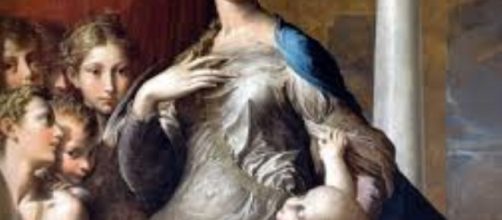He's not a household name like, say, Monet. Most people probably never heard of the painter Parmigianino. But you know what? They should. And they would if museums would stop mounting shows of Impressionism ad nauseum, as if a pretty picture were all that’s ever asked of an artist. Did Monet define what art is when he said, “I would like to paint the way a bird sings”? Do his near formless pictures of changing light on things like London’s Waterloo Bridge make his point? I vote no. The work of Parmigianino makes a better definition.
The human element
His name came up this week when the Getty Museum announced additions to its collection - 16 Old Master drawings by the likes of Michelangelo and Rubens. Parmigianino was in the mix and should be. He might well have been the first modern artist for pushing back on the Renaissance canon of symmetry, harmony, and balance. He didn’t see the value of idealizing anything. Perfect people are the stuff of mannequins. Rather than pose flawless figures with airs of Olympian detachment, he sought to convey what it means to be human. He did this by exaggerating forms as if to shock viewers into feeling people’s pain or passion. His kind of art-making was tagged Mannerism by those of the Renaissance mind who saw his effort as an affectation.
Renaissance historian George Vasari put it nicer as “figures that exceed exact measurement.” Instead of Mannerist, this column sees Parmigianino as an Expressionist before there was any such thing.
Picturing spirituality
Exemplifying the Mannerist style is Parmigianino’s “Madonna of the Long Neck.” The title he gave this art tells you right off that the exaggerated proportions were not the result of astigmatism but that he was aware of what he was doing. What you see is a female figure stretched past normal proportions. Spaces between body parts are either too long (distance between waist to knee) or too short (distance between knee and foot). If you’re fixed on the way things are supposed to look, you'd expect that when this woman rises from her seat, her knees will meet her toes.
This is no song of a bird
But that’s not what Parmigianino wanted anyone to think about “Madonna of the Long Neck.” Her thoughts are not on the natural proportions of the physical world. She’s in a spiritual state and the painter clearly wants to show how little the scene has to do with earthly matter. He elongated her form to get across the idea that she is being pulled away from reality by the holiness of her Infant. Monet spoke of art that didn’t look as pretty as the song of a bird this way: “If the world really looks like that I will paint no more.” He just didn’t get that when it comes to art, a pretty picture is never the whole story.


